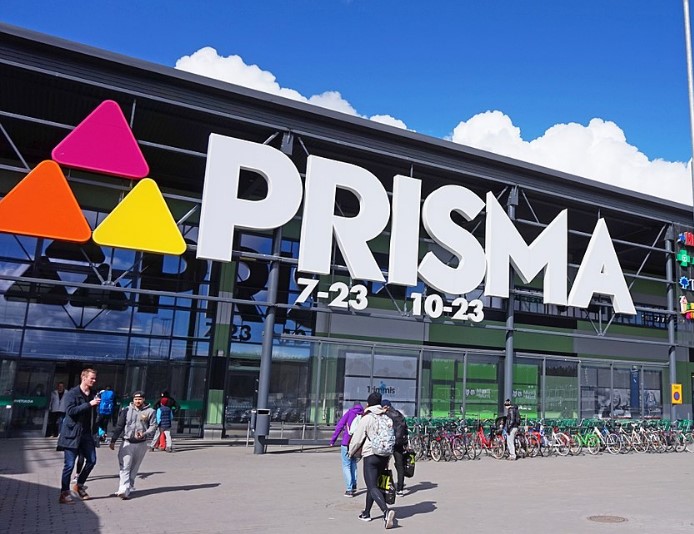Rising living costs have caused a wave of strikes in Finland, ranging from the technology, chemical and plastics industries to retail workers and dockers. While unions have been quick to end the strikes, negotiating completely insufficient deals, it’s clear that the class struggle is sharpening in Finland on a wide front.
Whereas the Finnish stock market index (OMX Helsinki 25) reached record highs throughout the pandemic, Finnish workers are now faced with rapidly rising inflation, electricity bills and interest rates. Adding insult to injury, the Finnish ruling class has embarked on a reckless foreign policy of escalating tensions and irresponsible belligerence towards Russia. On the other hand, no money seems to be available to rescue the crisis-ridden Finnish healthcare system or to pay the overworked and underpaid nurses, no military expense is spared by the Finnish ruling class.
The leadership of multiple Finnish unions, despite their habit of holding back their members, are being driven toward strike action by their rank-and-file who are under pressure from all directions with inflation rising and companies laying off workers across the globe. Technology, chemicals, and plastics workers in three unions at 50 companies walked out for a planned three-day strike at the beginning of February, followed by retail workers in PAM, and now logistics & dock workers who are still on the picket line.
Class struggle intensifies as Social Democrats break strikes
The Finnish ruling class has used the pandemic, war and inflation to unleash an assault on working people. A year ago, the nurses’ unions were locked in a ruthless struggle with the supposedly ‘worker friendly’, ‘historically leftist’ government of prime minister Sanna Marin of the Social Democratic Party of Finland. She squandered the goodwill she had on account of her handling of the COVID-19 crisis by banning the nurses’ strike without batting an eye.
 Sanna Marin's Social Democratic government last year dealt with the nurses' strike by banning it / Image: Finnish Government
Sanna Marin's Social Democratic government last year dealt with the nurses' strike by banning it / Image: Finnish Government
In the end, the nurses backed down and accepted a compromise. The bureaucratic leadership of the powerful unions of traditional industries stood by in silence as their comrades fought tooth and nail for a (still below-inflation) pay rise. Meanwhile, staffing shortages and low pay blight the Finnish nurses, just like in other countries. The situation in emergency wards and hospitals remained critical throughout the summer and autumn of 2022, and just about managed to get by without experiencing a complete collapse of the system.
Current conditions in healthcare facilities are untenable all over Finland. Things are hanging by a thread day by day, as nurses continue to be overworked and are underpaid. Scores of nurses are quitting the profession altogether and are ensuring they cannot be forced to work by law by having their right to practise withdrawn from the official nurses’ registry.
Concerted action on the order of the day
A number of collective bargaining processes finally came to a head in the beginning of February 2023, just as inflation has soared since late 2022. The Finnish Industrial Union began a wave of strikes on 1 February, as 7,000 workers laid down their tools in the technology, chemicals and plastics industries. The main message from Industrial Union leader Riku Aalto was: “salaries must rise as prices rise”.
 The Service Union United (PAM) announced a strike with the potential to shut down a majority of Finnish grocery stores / Image: Tiia Monto, Wikimedia Commons
The Service Union United (PAM) announced a strike with the potential to shut down a majority of Finnish grocery stores / Image: Tiia Monto, Wikimedia Commons
In a move that we haven’t seen in recent Finnish labour disputes, the Service Union United (PAM) announced a strike for 2 February while negotiating the terms of labour for an army of retail employees. With maximum turnout, this strike could have closed down a majority of Finnish grocery stores, including big chains like Prisma, Citymarket and Lidl. Dockers and transport workers went out on strike on 15 February, severely hampering Finland’s foreign trade, as 90 percent of its exports go through the ports.
The Finnish government has helped the bosses by trying to tamp down the strike wave. On 2 February, the state mediator used her discretion to postpone the grocery store/retail workers’ strike by two weeks, based on an exception for “functions vital to society”. This is in line with an emerging trend among capitalist powers to limit the right to strike via legislation, like the recently thwarted railroad workers’ strike in the US and the aforementioned nurses’ strike in Finland.
A dumbfounded Service Union United (PAM) president Annika Rönni-Sällinen said, “This came out of the blue for us. The reasons seem incomprehensible, and we were never contacted about it. This limits employees’ right to strike, which should only be done in very exceptional circumstances. This seems like a very strange, harsh decision.” The crisis is forcing the state and the bosses to work together to limit the aspirations of the working class.
The Industrial Union’s strike ended with a whimper as their negotiators accepted a mere 7 percent increase over two years, far lower than the inflation, which was 9 percent as of December 2022. The retail workers organised in PAM did go out on strike on 9 February, despite the administrative delay, but it was cut short after 2 days when PAM negotiators accepted a €165 per-month increase, short of their original €200 per-month demand. These results allowed the union leadership to claim a victory, but they won’t stop the fall of the living standards of the workers.
The transport and dock workers organised in the Transport Union (AKT) have seen the results of these negotiations, and have pushed their union leaders to refuse any similar deal offered by their employers. The Finnish Port Operators Association, representing the bosses, claims the strike will cost €280 million a day. The AKT has also threatened to spread the strike to more areas of transport in the beginning of March if their demands for wage increases in line with inflation are not met. International logistics companies that operate in Finland, like DHL, are now recommending that their customers use air freight for express deliveries, since the ports are not running, though they warn the pick-up and drop-off of goods will be delayed by the transport workers’ strike.
The union must therefore spread the strike to win. To ensure that production is ceased, they must block all forms of scabbing – whether it’s driven by their own employers or another company. The first step is to work to draw the air freight workers in to strike action.
Importantly, unions under the Central Organisation of Finnish Trade Unions (SAK) launched the #Palkkaliitto campaign, which translates to ‘salary union’. This means they publicly declared to be standing in solidarity with each other with their salary demands. This is key in the Finnish system, where results from negotiations in the major export industries are seen as pointing the way for the salary increases other workers get, as bosses use divide-and-rule tactics, singling out and attacking one small union at a time in order to prevent collective action.
Finnish workers rising
As Finnish workers are drawn into the class struggle through strikes like these, valuable lessons will be learned. The struggle itself will reveal that the class interests of the bosses are diametrically opposed to those of the workers. It will also expose the bankruptcy of any union bureaucrats that preach collaboration with the employers. Workers will learn that only by expanding the breadth and depth of strikes can meaningful concessions be won. Finally, they’ll learn to see themselves as a class, struggling alongside all other workers across Finland and the globe. Not a single hospital functions; not a single child is taught; not a grocery bag leaves the supermarket; and not one ship is loaded without the kind permission of the working class. It must learn to trust only in its own strength.
Capitalism’s overwhelming crisis has most definitely arrived on Finland’s shores. As class consciousness among the workers increases and the crisis deepens, momentous battles with the bosses loom in the not-so-distant future. To win these struggles, the Finnish workers will need a far-sighted, militant leadership that’s ready to fight to the very end. The most advanced layer of the Finnish workers must now organise around a revolutionary Marxist tendency that can guide the working class towards its final goal: socialist world revolution.
The struggles of the future will be for just such a revolution, for replacing generalised want with generalised plenty and true democratic freedom for all workers! Join the IMT in Finland, Vallankumous, as we build an international Marxist tendency to achieve this!

